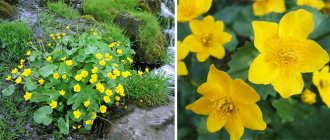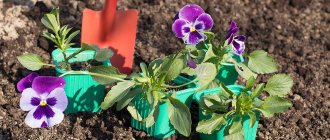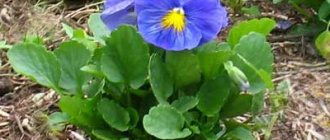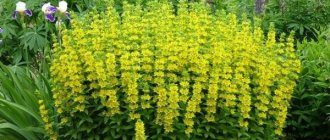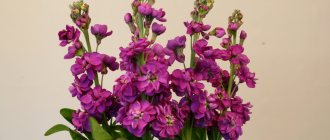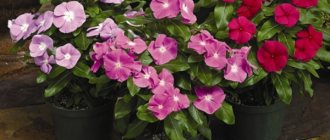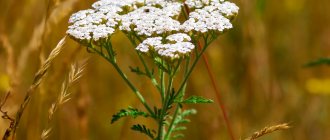Legends about pansies
They used to bewitch people. Believed to induce love. It was necessary to sprinkle them with juice on a sleeping person. Upon awakening, he or she must fall in love with whoever they see first.
People created legends about their origin. So, according to one of them, Anyuta loved a guy, and he was forced to marry another. She died from grief during the wedding and turned into a flower.
Pansies symbolize true love
According to another: Anyuta was waiting for her beloved, killed in the war. I looked through all my eyes. After death, she was reborn as a flower by the road. And to this day he peers into the distance, looking for his betrothed with his eyes.
The colors of the petals also have a special meaning. Blue or purple mean the girl’s collapsed hope. White symbolizes hope for sincere and mutual love. Yellow - expresses surprise that the young man did not return.
In the Christian religion, the flower was endowed with religious meaning. The dark peephole in the middle was considered the all-seeing eye of God. This is only a small part of the legends about these romantic flowers. They all contain a similar meaning.
12. Varieties and types:
12.1. Double pansies
A distinctive feature of varieties with double flowers is the presence of a large number of petals in each bud.
↑ Up,
12.2.Pansy Rococo
Terry plants with large and brightly colored flowers. The tips of the petals of plants of this variety are highly corrugated. The bushes are compact in size and do not exceed 20 cm; the flowering period lasts from April until serious frosts.
↑ Up,
12.3.Pansies Flamenco
Terry corrugated buds of plants of this variety reach a diameter of 5 - 7 cm, bushes grow up to 23 cm. This variety has good resistance to frost.
↑ Up,
12.4.Pansies Reinhold
During the flowering period, the bushes form simply gigantic flowers, the diameter of which reaches 8 cm. The height of the plants is 15 - 20 cm, they are frost-resistant and bloom very profusely.
↑ Up,
12.5.Pansy Ullswater
The dark, rich flowers of this variety are painted in blue or purple tones with dark spots in the center of the buds. The bushes are very compact - their height does not exceed 15 cm, the buds reach a diameter of 5 - 7 cm.
↑ Up,
12.6.Pansies Bergvasht
The variety is a giant with very large flowers up to 8 cm in diameter with deep purple petals and a bright golden-orange center. The bushes reach only 15 cm in height.
↑ Up,
12.7.Pansies Malvina
The variety is compact - no more than 15 cm in height with bright buds painted in several shades. The flower petals are bluish-blue, with a white center and a dark, almost black center.
↑ Up,
12.8. Pansy Silverbride
A distinctive feature of this variety are white flowers with dark purple spots on the petals.
↑ Up,
Description
The botanical name of pansy is viola. This is a herbaceous plant, it can be annual or perennial. Member of the Violet family. The genus includes about 400 species.
Professor of botany Veit Wittrock wrote a book about this plant; in his honor, pansies are also called Wittrock’s violet.
The plant has a fibrous rhizome. Depending on the type, it can be spreading or compact
The height of the bushes varies from 15 to 40 cm. The leaves grow on the petioles in a regular sequence. Their shape is oval or ovoid.
The peduncle crowns one flower with a spur, which collects nectar. The diameter reaches 10 cm. They are usually painted in three colors, the middle is contrasting. Thanks to this feature, the flower is called pansy.
The fruit is a capsule with three chambers. Small seeds, 1 gr. contains about a thousand seeds. Shelf life: 2 years.
Viola grows on almost the entire Eurasian continent: Europe, Russia, Asia Minor. These flowers can be found along roads, in forest clearings, fields, vacant lots and even in landfills.
Description of the plant
Pansy flowers
The pansy flower is native to Europe. As new species appeared and the plant was domesticated, it spread throughout the world. Its popularity is largely due to the fact that caring for it at home is not difficult, but the culture is mainly valued for its beauty. This plant grows as a bush 15-30 cm high.
Flowering is usually early and long lasting. The bud is located on the peduncle. The flowers have an unusual shape and color, which is why they attract attention. A flower can have different types of petals: straight, double, with smooth or wavy edges. The petals are always bright and combine different colors and shades. The palette inherent to viola includes white, yellow, black, purple, blue, red and pink, as well as many other colors. But the middle, as a rule, is yellow and although it is very small, it is difficult not to notice it.
Growing from seeds
Viola Seeds
The seed method of propagating pansies is quite simple. First you need to choose a sowing time.
It depends on when you want to see the first flowers:
- In order for the plant to bloom next year, it must be sown in open ground in the fall. This should be done in August or September. Viola will have time to sprout and its root system will begin to form. By the time frost sets in, it will be a fully formed bush. Having overwintered, it will give you flowering in April, which will continue until autumn.
- If you plant pansies in the spring, they will bloom in the year of planting . Here it is necessary to use the seedling method. We will look at it below. This planting is carried out at the end of winter.
- If you sow the seeds in May or June directly into the ground, the viola will begin to bloom in September . Winter will find it blooming, but next year it will bloom again.
Step-by-step instructions for growing seedlings:
First shoots of seedlings
- Before sowing, it is recommended to treat the seeds with a solution that stimulates growth, for example, you can use citron. If the seeds were purchased from an unreliable seller, they need to be disinfected with a weak solution of potassium permanganate.
Pansy seeds can be stored for no more than two years, after which they lose their viability.
- Soil plays an important role. For viola, you can use purchased peat tablets or violet substrate.
You can make the mixture yourself. To do this, garden soil, peat and rotted compost are mixed. The proportion should be 2:2:1.
Be sure to spill the self-prepared soil mixture with a hot solution of potassium permanganate. This will kill any fungal spores that may be waiting in the garden soil.
- Pansy seeds can be sown on top of the substrate or embedded in the soil.
The first method: spread the planting material on moist soil. Cover with film and keep until sprouts appear in a dark place at a temperature of 22 degrees. Every day you need to remove the film for 10 minutes for ventilation.
Second method: Seeds are sown in furrows. The depth that should be is about 0.5 cm. The distance between them must be kept 1-2 cm.
The step between the seeds should also be 1 - 2 cm. After the grooves are sealed, you need to water the viola. Cover with film and place in a warm place.
Such sowing does not require keeping in the dark. The film also needs to be removed every day, for 10 - 15 minutes. Depending on the variety and quality of planting material, the first shoots will appear in 2 - 4 weeks.
Viola seedlings
- After the seedlings emerge, the container with seedlings should be placed in a well-lit place . Viola is not afraid of the spring sun, so the window sill of a south window is suitable for her.
- The film cannot be removed from the seedling container immediately . It is necessary to accustom the seedlings gradually. To do this, you need to increase the ventilation time throughout the week.
- Pansies can feel quite comfortable at a temperature of +5+10 degrees . Therefore, during the day, seedlings can be taken out to the balcony, terrace or yard. Fresh air will contribute to its rapid strengthening and growth.
- Viola needs regular watering . It is produced when the top layer of soil dries. However, you should not overwater, as excess moisture will cause the plant to rot.
- Picking is done after 2-3 full leaves have grown . Transplantation is carried out into separate cups. Viola takes root well, so if the root is damaged, it’s not a big deal. This will not deteriorate the health of the plant, only growth may slow down a little.
- If the stem of the dived pansies has stretched out . It can be deepened into the ground almost to the leaves. This will improve the appearance of the plant and make the root system stronger. New roots will grow on the surface of the recessed stem.
- After several pairs of leaves have formed, you need to pinch the top of the stem . This will make the bush lush.
- Planting in open ground is carried out after stable weather has established, without frost . The distance between bushes should be at least 10 cm.
Pansies tend to self-pollinate
Therefore, you should not be surprised when you see flowers of an unexpected color in your flowerbed. By the way, it can be propagated by collecting seeds.
Sowing seeds in open ground:
- Make shallow grooves. The gap between them should be 10 cm.
- Spread the seeds, keeping a distance of approximately 1 - 2 cm.
- Water the crops and cover with film.
- After the shoots emerge, the film is removed. Seedlings need to be provided with partial shade conditions. For this purpose, a canopy is constructed. Or tree branches with foliage are installed along the perimeter of the bed.
- Transplantation to a permanent place is carried out after the appearance of 3 leaves.
In order for the bushes to bloom profusely next year, it is not necessary to allow flowering in the first year. To do this, all the buds are cut off.
Pansy flowers. Description, features, types and care of pansies
It is impossible to pass by pansy flowers indifferently. Whether they are on the balcony or flowerbed. Several feelings immediately overwhelm you: tenderness, romance.
All varieties are so similar to each other and at the same time so different. The delicate aroma and cheerful colors of the petals cannot but please the eye.
Description and features of pansies
Pansies are called tricolor viola, popularly Ivan da Marya. They belong to the violet family. Plants exist as annuals, biennials and perennials.
Flowers are divided into spring and summer blooming. This is probably their uniqueness: any variety is suitable for choosing the flowering time.
It all depends on the landing time. The root is a brownish rod in the form of a rod with small branches.
The stem extends from 10 to 30 cm. The inside is hollow, triangular, erect or branched. Single buds with five petals sit on triangular peduncles with two bracts near the flower.
Flower petals differ in size. Two of them are larger than the others. The color of the petals has a different range of shades, even black. There are spots in the center of the bud, and a picture emerges, like a muzzle.
The poetic name of the pansy has given rise to many legends. Many countries and even regions have their own answers about why pansies are called:
According to an ancient legend, the flower got its name in honor of the girl Anyuta, who could not stand the separation and injustice towards herself and died.
And it all started like in a fairy tale, the guy fell in love with the girl, she reciprocated. The seducer simply disappeared forever.
After her death, flowers with different colors stretched out on the grave, as if betraying her feelings: hope, resentment, sadness.
The Romans say that men spying on the goddess of love were turned into flowers with eyes.
In Russia, according to legend, a girl and a guy loved each other. Their parents separated them and married the guy to a rich girl. Anya died of melancholy.
Another legend, a girl, not getting a guy, died of melancholy. Flowers grew on the edge of the road, as if they continued to wait for their loved one.
Planting and propagating pansies
Pansies in open ground are planted in a sunny place with slight shade. Partial shade is also suitable, but there is a slight difference in the final stage.
Flowers in the light grow in larger buds than in the shade. But the duration of flowering in the shade is longer. Pansies prefer light, nutritious, well-drained soil.
Before planting seedlings, the soil is dug up and saturated with humus and mineral additives. Pansies can be grown by seedlings, seeds and cuttings.
By seeds:
Planting material is sown in June in open ground in a designated bed. Pour a layer of soil on top and compact the soil a little.
As soon as two true leaves appear, make a pick. Before planting pansies, shorten the roots. This will make it possible to develop the root system well.
The step between seedlings is from 10 to 25 cm. It all depends on the variety. For the winter, cover the seedlings with spruce branches and create a barrier for snow retention. Pansies from seeds will bloom in the spring.
Growing pansies from seeds
Seedlings:
The substrate is prepared and the seeds are sown in March. Sprinkle with soil and cover with glass. Containers are stored in a dark place until germination.
Periodically spray and ventilate the containers to prevent the soil from rotting. As soon as the shoots have appeared, the containers are placed in a bright place.
When two true leaves appear, the seedlings are planted in separate flowerpots. The seedlings are gradually accustomed to street walks. To do this, take them out onto the balcony or terrace.
Pansy seedlings are planted in open ground after stable weather without frost has established.
Although the plant is considered a frost-resistant crop, the seedlings may freeze. Flowering can be expected a month after planting in open ground.
Pansy flower seedlings
By cuttings:
Green shoots are cut off from the mother bush in June. The cuttings are planted directly in open ground close to each other. In this case, choose a shaded place, for example, under trees.
Cover the culture with jars to create a good microclimate. As soon as new leaves begin to appear, the plant has taken root.
By autumn the cuttings will get stronger, then they are planted in a permanent place. Pansies can be grown at home using the same methods.
Only the landing site should be on an open balcony. If you want to plant them on the windowsill, you should always keep the window open.
Caring for pansies
The plant loves sunny spaces when the temperature is from 10 to 25 degrees C. Flowers do not lose their decorative effect even at temperatures of 3-5 degrees C.
But higher temperatures will have a detrimental effect on the plant. The bushes will simply burn out, and those that remain will stop blooming and will resume flowering only in the fall.
Therefore, in such a situation, you should consider shading the bushes, for example, with non-woven material. At home, you should not choose western and southern balconies. The most optimal side is the eastern side.
Watering should be moderate. Do not overwater the soil or let it dry out. Waterlogged soil can develop rot, which will lead to blackleg disease and destroy flowers.
When caring for pansies , do not forget about feeding. In the garden, feed the bushes once a month. Instances on the balcony require more frequent application of fertilizer, that is, weekly.
The first feeding can be done two weeks after planting. The plant responds well to complex mineral fertilizers.
When adding them, you need to be careful not to catch the leaves, pour only at the root. Avoid fresh manure; the plant cannot tolerate it. Loosen the soil after watering. Remove weeds.
Rejuvenation of perennial plants should be carried out after 3 years. This will give impetus to lush flowering. Maintain the decorative effect of the flower by regularly removing faded buds.
For the winter, cover the flowers with spruce branches and remove them from them in early spring to prevent rotting.
Send balcony specimens to a room with a temperature of 5-15 degrees C. If you have a garden, you can plant them in the ground 21 days before frost.
Types and varieties of pansies
Among the variety of species and varieties, the most popular specimens are.
Small-flowered pansies
The photo shows Flamenco pansies . Flowers, corrugated in various colors. In the center are petals with blurred shading of yellow and bright red.
The volume of the inflorescence is up to 5 cm. The bush stretches up to 23 cm. In landscape design, it is used to decorate flower beds, borders, and flower beds.
The flowers are frost-resistant, so they can easily tolerate the cold climate of the northern regions of Russia. Flamencos are distinguished by long flowering, starting in April and ending in late autumn.
They are grown in partial shade, but do better in sunny areas. If you plant flamenco seeds in June, then in August you can safely transplant them from the growing bed to a permanent place. Next spring the flowers will delight you with lush blooms.
Pansies flamenco
Rococo. The compact plant stretches up to 20 cm. The folded and corrugated petals collected in a bouquet look like terry ones.
Rococo in flower beds look like an exotic plant. There is one drawback: Rococo has poor frost resistance.
Rococo pansy flowers
Among the domestic pansies, F1 Angel can be distinguished. Miniature buds up to 4 cm in diameter can be of different colors.
Pansy variety angel
Description of medium-flowered pansies
Quedlinburger Riesen. The volume of inflorescences is up to 7.5 cm. The buds are white, blue, yellow, crimson with a yellow eye in the center of the petals and black spots near the base.
Pansy Quedlinburger Risen
Giant Forrunner F1. The buds are bright yellow with brown spots on the petals closer to the base. Among its fellows it is considered the most winter-hardy specimen.
Pansy Giant Forrunner
Large-flowered varieties of pansies
Shalon Supreme. Inflorescences up to 8.5 cm. Corrugated petals of a soft lilac color with light shades. A spot in the center of one of the petals with a cream edging.
Pansy Shalon Supreme
Dynamite. Snow-white buds are combined with rich raspberry tones on the lower petals. What makes the variety original and popular. The diameter of the inflorescence is up to 8.5 cm in diameter.
Pansy flowers Dynamite
Magnum F1. The variety was developed quite recently. The diameter of the bud is over 9 cm. Gentle blue petals with bluish spots.
Pansy magnum
Pansy diseases
Pansy flowers are susceptible to the following diseases:
Cucumber mosaic. The carriers of the virus are insects. The leaves of the flower are wrapped in a roll and torn. The buds look unsightly.
The disease can be prevented by destroying aphids. Infected plants cannot be saved; they are simply uprooted and burned.
Damage to a flower by cucumber mosaic
Root rot. The disease starts from the roots and is transmitted to the entire plant. The color of the leaves changes and the roots turn brown.
Control: pay attention to the composition and acidity of the soil, adjust watering, treat with fungicides.
Flower disease root rot
Bacterial spotting. The favorable environment is cold, damp weather. The roots become overcooled and spots appear on the leaves.
Control: treat the bushes with copper oxychloride; after cold precipitation, collect and burn the infected areas.
Plant damage by bacterial spot disease
Late blight rot. The stems are affected near the very base. The leaves acquire a yellow, then blue tint. If the plant is on the balcony, the plant should be pulled out and burned. Throw away the earth.
Late blight rot on leaves
Powdery mildew. The first signs on the leaves are a white coating, which over time is transferred to the buds.
At the first stage of the disease, these are just spots. They can be easily washed off, but then they increase in size and acquire a denser structure.
The color turns grey. Nitrogenous fertilizers pose a high risk of infection. Control: for preventive purposes, spray the bushes with whey. In case of disease, treat the flower with fungicides, for example Topaz.
Powdery mildew
Pests of pansies
Spider mite. The bush is enveloped in small cobwebs, and dots appear on the leaves. At the initial stage of infection, treat the flowers with mineral oil, soapy liquid, and tobacco infusion. If it doesn’t help, use Ditox, Fitoverm, Kungfu.
In the photo, a plant pest is a spider mite.
Aphid. The leaves become deformed, turn yellow, and a sticky coating characteristic of aphids appears. A minor lesion is washed off with a solution of water and soap, and ladybugs are planted on the flower. In more severe cases, treat with Akarin, Antiilin, Bison.
In the photo there is an aphid
Slugs. Pests nibble the leaves of the flower. It is necessary to fight them even before planting seedlings. Dig up the area, pour in substances that make it difficult for the slug to move: eggshells, crushed stone, etc.
Slugs in the photo
Scatter ash near the bushes. You can prepare traps and collect the “harvest” in the morning. Because slugs attack at night. When fighting slugs, reduce watering and do it only in the morning.
Outdoor care
Plant in open ground
When caring for any plant, you must follow the rules. Create the most comfortable conditions.
Let's consider the requirements of pansies for light, soil, watering and fertilizers:
- The iola can grow in sun and shade . The optimal location would be one that receives direct sunlight only part of the day. Too much light can speed up the flowering process. It will be completed by mid-summer.
- The soil for pansies must be fertile . The brightness of the color of the petals depends on it. Flowers growing on poor soil will be faded. Their size will be significantly reduced.
- Viola is very demanding when it comes to watering . It must be regular. As the top layer of soil dries, it needs to be moistened and immediately mulched. This will stop the evaporation of moisture. At the same time, you cannot overfill it. Otherwise, the root system will begin to rot. The process is irreversible and leads to the death of the bush.
- Fertilizing should be carried out during the growing season and flowering . The first procedure is carried out 2 weeks after planting the seedlings in the ground. Complex fertilizers for flowers, for example, kemir, are suitable. It is introduced into the ground during the next watering.
Pansies respond positively to foliar fertilizers. These are mixtures intended for spraying bushes.
Manure should not be used as top dressing. Viola can't stand it.
To extend the flowering period, you need to regularly remove faded flowers. This procedure will direct the energy of the bush not to the ripening of seeds, but to the formation of new buds.
Vegetative propagation
In addition to the seed method, pansies can be propagated by cuttings or layering
These methods are used to preserve the varietal identity of a new plant.
Hybrid varieties, when planted with independently collected seeds, most often lose the qualities of the mother bush:
- Cut cuttings must have at least two nodes . They are planted in the prepared substrate and shaded. Carry out regular watering and spraying. You can plant them in greenhouses. They are transferred to a permanent place in open ground after the root system has formed.
During the season you can get up to 40 pieces from one bush. Cherenkov. Flower growers, however, do not recommend cutting more than 10 pieces at a time. from one bush.
If you plant cuttings in May or June, the young bush will begin to bloom in late summer or early autumn. If you plant them in the fall, the first flowers will appear in the spring.
- To propagate a bush by layering, you need to shade it . The branches will begin to stretch out in search of the sun. They need to be pressed to the ground and covered with soil.
It is best to carry out the procedure in the fall . Over the winter, roots will form in the buried area. In spring, the rooted plant can be transplanted to another location.
Reproduction of pansies by layering is suitable for hybrid varieties . Just like cuttings, it preserves varietal identity.
Vegetative propagation rejuvenates the plant . Despite the fact that most viola varieties are perennial, already in the third year of life they lose their decorative value. Their bushes grow, the flowers become smaller, and fewer buds are formed. The optimal period for bush growth is 2 years.
Wintering
Not all varieties of pansies are frost-resistant. To prevent the bushes from freezing, they need to be covered.
They winter well under a snow cap or spruce branches
Under no circumstances should the viola be covered with leaves or sawdust. They absorb moisture well, creating a favorable atmosphere for rotting of the root system. Such a shelter will destroy the plants.
Composition and medicinal properties of pansies
- Thanks to the rich chemical composition of pansies, they have effective medicinal properties. The plant contains saponins, tannins, rutin, glycosides, salicylic acid, vitamin C, carotenoids, as well as micro- and macroelements.
- Violet tricolor is known for its anti-inflammatory properties due to its active essential oil and mucus-like substances. Used as an antiseptic in the treatment of diseases of the stomach and intestines. It has mild antispasmodic and choleretic properties.
- Thanks to the saponins included in its composition, violet has a bronchodilator, expectorant and diuretic effect. Used for bronchitis, acute respiratory diseases, and colds.
- In dentistry it is used as an antiseptic and anti-inflammatory agent for toothache, periodontal disease and various inflammatory diseases of the oral cavity.
- It has a moderate sedative effect in cases of rapid heartbeat, neuroses, insomnia, nervous tics, epilepsy and increased nervous excitability.
- Due to its diuretic properties it is used for diseases of the urinary system.
- Helps improve the condition of atherosclerosis, arthritis, rheumatism, improving metabolism and providing an anti-inflammatory effect.
Growing in pots
Viola grown in a pot
Pansies can grow not only on a personal plot, but also on a balcony, terrace, veranda and even in pots in a room. Moreover, you can sow seeds at any convenient time.
Step-by-step instructions for growing viola in a flower pot:
To grow pansies in pots, you can use one of the methods listed above:
- Planting by seeds
- Planting by cuttings or layering
- The pots chosen are not very large . A drainage layer is laid at the bottom. Expanded clay or crushed stone is suitable for this. The substrate is poured on top. The same mixture is suitable as for growing viola seedlings.
- The plant needs to be provided with good lighting. Although, direct sunlight is contraindicated for the grown bush. They will leave burns on the foliage.
- It is better to keep the room temperature cool from 15 to 20 degrees . Warmer conditions encourage stems to stretch. This will negatively affect flowering.
- It is necessary to monitor soil moisture . It should be kept slightly moist at all times. Both drying out and overwatering will lead to pansy disease.
- During the formation of buds and during the flowering period, you need to fertilize . You can use complex fertilizer. It should be borne in mind that viola does not like fresh manure and nitrogen. You can use superphosphates and nitroammophosphates. The proportion is 1 tablespoon per 10 liters of water.
Pansies do not always bloom flowers in the first year . Therefore, if you don’t see flowers right away, with proper care, you don’t need to be upset. In the second year of life, they will definitely give you abundant flowering.
Diseases and pests
Pansies have good health
However, they are also attacked by various infections. Hybrid plant varieties are most often affected.
Diseases:
Root and stem rot
- Very dangerous diseases, affected plants cannot be saved.
- The causative agent is fungi. They become active mainly during winter.
- The plant overheats, which creates favorable conditions for the growth of mycelium.
- In summer, this infection can damage young, fragile bushes.
- Affected pansies begin to wither, their growth stops, and spots appear on the stems and leaves.
- Diseased specimens are removed.
- The soil should be sprinkled with wood ash or calcined sand.
- Be sure to let it dry; for this, the intensity of watering is reduced.
Powdery mildew and rust
- Powdery mildew and rust rarely infect pansies.
- The first attack settles on the leaves with a white coating similar to flour, the second is expressed as rusty spots on the surface of the leaf blade.
- If the lesion is small, only the infected leaves are removed. If severe, the plant is completely destroyed.
- You can fight them with a 1% solution of Bordeaux mixture.
Viral diseases
- They are carried by leaf-sucking insects such as aphids.
- Signs are manifested in yellowing of stems and leaves, the appearance of mosaic spots, and the development of buds is incomplete.
- The diseased plant must be removed from the flowerbed and then burned.
- Treat the soil where it grew with a hot, saturated solution of potassium permanganate.
- Take measures to combat possible carriers of the virus so that they do not infect neighboring plants.
Pansies can be attacked by pests
Pests:
Aphids attack a plant and suck the juice out of it. In this case, the leaves become deformed and young bushes die. Insecticides, soap solution, and a decoction made from tobacco leaves or potato tops help fight it.
Spider mite Attacks pansy bushes during drought. The leaves of the damaged plant begin to curl and dry out at the edges. Plants are sprayed with a lime-sulfur solution. Damaged parts of the plant must be removed.
Root-knot nematode Stops the development of pansies. It affects the root system. Blisters up to 5 mm in size are formed. There are no methods to combat it; affected bushes must be removed.
Pythium Manifests itself as reddening of the leaves followed by drying out. The causative agent is rot fungus. The plant must be removed, and the place where it grew disinfected. To do this, use a 2% formaldehyde solution.
Smut This disease damages the buds. She fills them with a black mass containing spores. For prevention, seeds are treated with a solution of potassium permanganate or formaldehyde. If the pansy bush is affected, it needs to be dug up and then burned.
Medicinal properties of viola
Pansies have beneficial properties for the human body
Traditional medicine uses pansies to treat the following diseases:
- Arrhythmia
- Neuroses
- Depression
- Pneumonia
- Inflammation of the genitourinary system
- Skin diseases
- Measles
- Joint diseases
- Psoriasis
- Eczema
- Diseases of gums and teeth
Decoctions are used as a diuretic, diaphoretic, and hemostatic agent.
Pansies should not be used for medicinal purposes for diseases such as:
- Hepatitis
- Glomerulonephritis
It is also not recommended for use by children under three years of age, pregnant and lactating women. For any use of plant materials for medicinal purposes. A doctor's consultation is required.
Procurement of raw materials
Both the root and ground parts of the viola are used for medicinal purposes.
The grass is collected in the summer during the period of active flowering. It needs to be dried, to do this, lay it out in a well-ventilated area. The layer should not be very thick, otherwise it will begin to rot and become covered with mold. Do not dry in direct sunlight.
The roots are dried in the oven at 40 degrees. Dried raw materials should be stored in cotton bags.
Medicine prescriptions
An infusion can be prepared from dried viola
. It is used for gargling and mouthwash, as baths and lotions.
To prepare you will need:
- 1 tablespoon of dry raw materials
- 200 gr. boiling water
Preparation:
Pour boiling water over the pansies and leave for 15 minutes in a warm place. You can use a thermos or a water bath. After this, strain, cool and can be used.
Cough syrup recipe:
- Water – 1 l
- Sugar – 125 gr
- Lemon – 1 pc.
- Dried pansies – 1 tbsp. spoon
Preparation:
Boil water and pour dry herbs into it. Leave overnight. Then add sugar and cook the syrup until thick. A few minutes before it is ready, squeeze the juice from the lemon and add to the syrup. Take 1 – 2 times a day, a tablespoon.
Pansies are not harmful to health if consumed in moderation. Their flowers are used in cooking to decorate dishes and confectionery.
Composition and medicinal properties
Thanks to the rich composition of pansies, they have powerful healing properties. They contain saponins and tannins, rutin and glycosides, salicylic acid and vitamin C, carotenoids and macroelements. The plant has anti-inflammatory properties due to the content of essential oils. Tricolor violet is used as an antiseptic for diseases of the stomach and intestines. It has antispasmodic and choleretic properties. Saponins in its composition have a bronchodilator and expectorant effect. Therefore, this medicine is often used for bronchitis and acute respiratory diseases. In dentistry, pansies are used as an antiseptic and anti-inflammatory agent.
The plant is also used in the treatment of the urinary system. It helps cure atherosclerosis and arthritis, rheumatism and gout. Violet tricolor improves metabolism. For dermatological diseases, its decoction is used both externally and internally.
The roots of the plant are used as an immunomodulator. In cosmetology, preparations based on tricolor violet cleanse and whiten the skin, relieve irritation and increase its elasticity.
